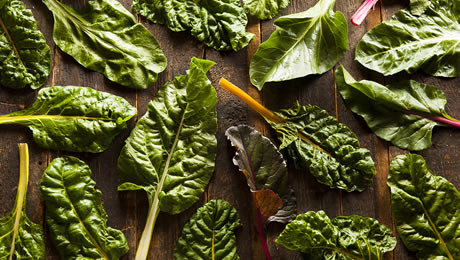Tips for Making the Most of Your Winter Veggie Garden

If you have never tried your hand at planting a vegetable garden for the fall and winter months, you may be surprised at just how easy it can be. Many folks never even consider venturing into the realm of wintertime gardening, which is a shame. Although spring and summer are viewed as the typical seasons for propagating lush garden spots brimming with colorful flowers, heady herbs, and succulent fruits and veggies, fall and winter have their own unique rewards.
Before hoeing a few rows and scattering seeds, there are some issues to address. First, check to see which garden “zone” you are in so you can choose plants that fare well in your climate. Next, research the predicted date for the first frost. Then, decide what you are going to grow, where things will be planted and when.
What to plant?
In cooler regions, it’s a good idea to choose produce with a short growing season. That way, there will be time for the seedlings to mature before Jack Frost and the Snow Queen show up. Many varieties of lettuce, chives, spinach, and radishes have the shortest growing time until they reach maturation. The average wait time before harvesting those veggies is about 30 days.
You’ll need to double that amount of time for collards, Swiss chard, early cabbage, kohlrabi, turnips, leeks, and early carrots. It is not surprising that larger, more complex produce requires more time to reach its full growth potential. Ninety days is the expected harvest time for beets, Brussels sprouts, cabbage, carrots, parsnips, rutabagas, and globe onions.
How and where?
After comparing points such as your typical fall and winter climate and which plants would stand the best chance, it’s time to decide on the how and where to plant. Maybe you are lucky enough to have a greenhouse, which will make this entire experience a walk in the park. Perhaps you have thought about miniaturized versions of the greenhouse idea. Known as “cold frames”, these mini-greenhouses can protect plants from frigid weather and hold in the heat. They are usually small, shallow boxes, with a sheet of plastic on the top, that fit over individual plants or small beds.
In mild climates, like the south, containers and raised beds are a nice way to start a winter crop of culinary delights. They are both efficient at holding in moisture and keeping the soil a bit warmer.
In deciding where on your property a garden would do the best, think about which places the plants would get the most sun and the best protection from the elements. The beauty of container gardens is that they can be moved around for optimal results. There have even been enterprising gardeners who place containers on sturdy metal carts and move them periodically throughout the day in order to soak in the maximum amount of sunshine!
Working with your local Agricultural Extension Agency, 4-H, Master Gardeners Club, or farmer’s supply store is a smart way to pick up tips and save time and money. Exchanging ideas and learning from fellow aspiring propagators is a wonderful way to meet new people and enhance your success level.
Frost Dates
A big concern that faces anyone who wants to plant a fall or winter garden is finding out when the first frost is expected. The gardening zone map of the U.S. is a great tool for figuring this out, because the estimated dates for the first and last frost are typically stated. After the frost date is determined, you can plan which things will have time to grow and mature in the allotted time. This information is generally always included on either the seedling tag or seed packet.
Benefits of a Fall/Winter Garden
For vegetable lovers, the varieties grown this time of year bring the promise of a smorgasbord of scrumptious dishes: sauteed greens with garlic, baked sweet potatoes, pumpkin pie, butternut squash soup, carrot and chive souffle, creamed parsnips, radishes with bread, butter, and sea salt, turnip roots braised in butter, spinach quiche, salad greens with fresh oranges and balsamic vinegar are just a few of the many possibilities. Hungry yet?
Studies Link Gardening to Happiness
There is another HUGE added bonus to cultivating a fall/winter garden and that’s getting some exercise in the fresh air. Gardening is a great way to stay active, as it requires regular activity and care in order to make the garden a success. Gardening is also fairly low impact, which is great for people with limited physical ability.
Gardening may even help improve your mental health. According to an article from the Huffington Post, a UK survey found that 80% of gardeners feel satisfied with their lives compared with 67% for non-gardeners. Furthermore, 93% of gardeners surveyed said they think gardening improves their mood. During the winter months, when the days are shorter and there’s less sunlight, many people suffer from Seasonal Affective Disorder (SAD). Add in the stress of the holidays and other personal issues that you may be facing and the winter can be a rough time of year. Perhaps gardening could provide a worthwhile, healthy, and satisfying distraction.
To help you plan your winter garden and make the most of its bounty, check out these helpful sites:
- American Horticultural Society
- DIY cold frame from Mother Earth News
- Real Simple’s fall recipe collection
Other Posts You Might Enjoy
Subscribe To Our Newsletter
Sign up with your email address to receive news and updates.